Inebriation and Intoxicants
Always Elvis Wine
Always Elvis wine was released in 1979, two years after Elvis's death. The front label had a picture of Elvis, while the back label featured a poem by Col. Tom Parker.Parker reportedly said that Always Elvis was the kind of wine Elvis "would have drunk if he'd liked the stuff."
At the time it sold for $4 a bottle. Now an unopened bottle of it will cost you upwards of $150.
However, there are other, newer Elvis Presley wines on the market, such as 'The King' wine, available at ElvisPresleyWines.com.
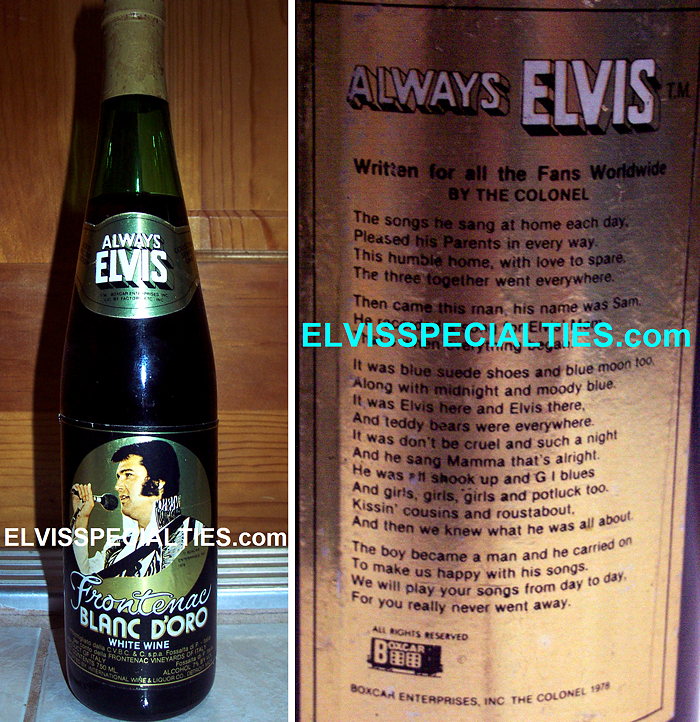
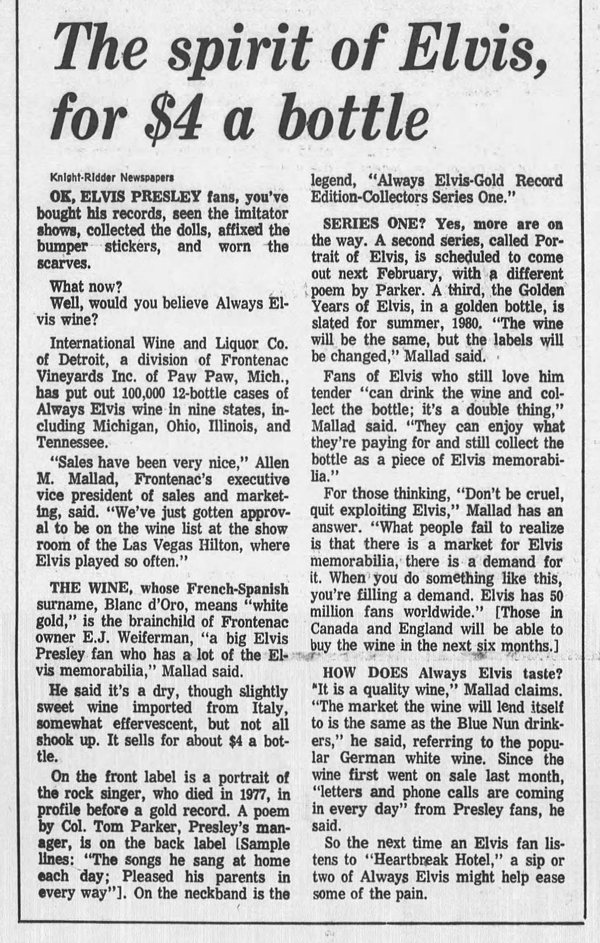
Chicago Tribune - Nov 4, 1979
Posted By: Alex - Fri Aug 27, 2021 -
Comments (4)
Category: Celebrities, Inebriation and Intoxicants, Music
“I thought the Kama Sutra was an Indian restaurant”
Smirnoff ran this ad in the 70s but reportedly pulled it after a few months when its market researchers surveyed customers and discovered that "60 per cent of them thought that the Kama Sutra was indeed an Indian restaurant."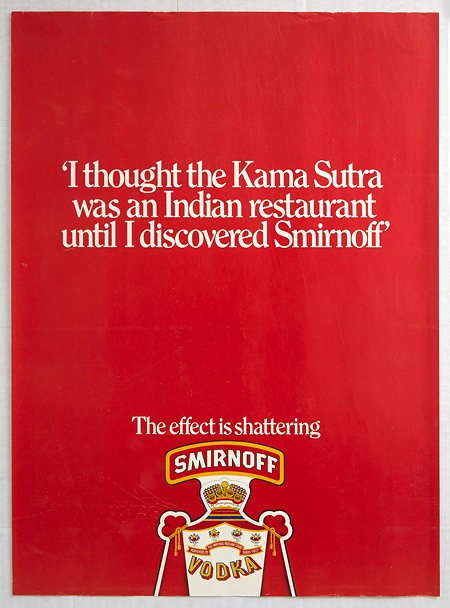
image source: codex
But according to Delia Chiaro in The Language of Jokes, the ad lived on in popular memory, inspiring a genre of "Smirnoff jokes".
I thought innuendo was an Italian suppository until I discovered Smirnoff.
I thought cirrhosis was a type of cloud until I discovered Smirnoff.
However it was not long before the graffitists began to abandon the formula, first by substituting the word Smirnoff with other items:
I thought Nausea was a novel by Jean-Paul Sartre until I discovered Scrumpy.
Soon, the caption began to move more radically away from the matrix, as more items were changed. In the next example there is no allusion to drink whatsoever:
I used to think I was an atheist until I discovered I was God.
Although Smirnoff jokes are now practically obsolete, the I thought A was B until I discovered C formula has now frozen into the English language as a semi-idiom. Today we can find graffiti (or indeed hear asides) such as:
I used to talk in cliches but now I avoid them like the plague
in which the original matrix is barely recognizable.
Below is another Smirnoff ad from the same series.
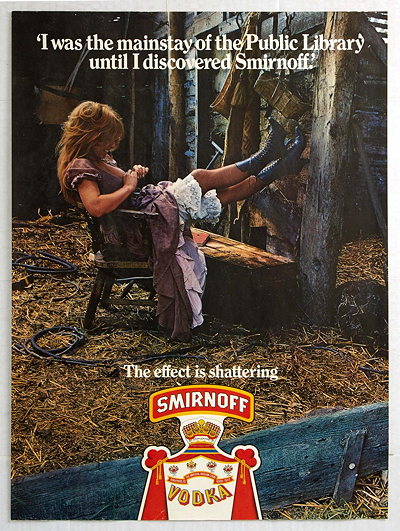
Posted By: Alex - Wed Aug 11, 2021 -
Comments (5)
Category: Inebriation and Intoxicants, Advertising, 1970s, Jokes
Octogenarian Teetotalers
Published by the National Temperance League of London in 1897. It contained 113 portraits of teetotalers who were over the age of 80.Unfortunately, there was no companion volume of Octogenarian Tipplers.
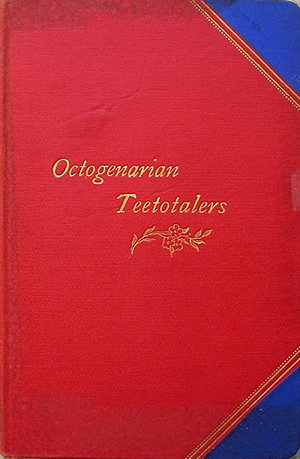
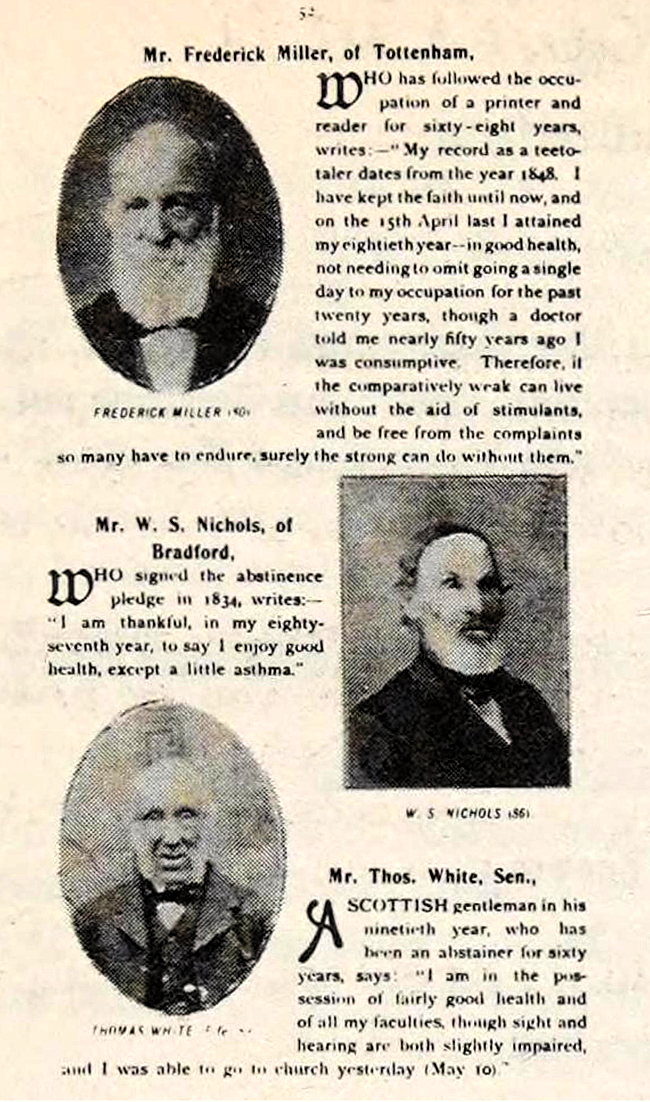
image source: Bizarre Books
Posted By: Alex - Thu Jul 29, 2021 -
Comments (2)
Category: Elderly and Seniors, Inebriation and Intoxicants, Books
Flagon and Trencher Society
In order to become a member of the Flagon and Trencher society, one has to satisfy the following rule of eligibility: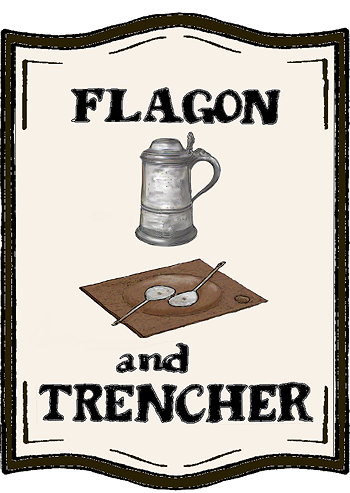
According to their website, the society was founded in 1962 by Walter Lee Shepard and the late Kenneth Stryker-Rodda. As of 2002, they had more than 1000 members.
There's a $200 fee to apply to join. But if you apply and can't satisfactorily prove descent from a colonial barkeep, you'll only get a portion of that fee back.
Posted By: Alex - Thu Jul 08, 2021 -
Comments (0)
Category: Clubs, Fraternities and Other Self-selecting Organizations, Inebriation and Intoxicants
Earl Grey Tea Intoxication
As reported in the April 17, 2002 issue of The Lancet:After 3 weeks, they also occurred in the left foot. After 5 weeks, muscle cramps had spread towards the hands and the right calf. Occasionally, he observed fasciculations of the right adductor pollicis and gastrocnemius. Additionally, he noted distal paraesthesias in all limbs, and a feeling of pressure in his eyes, associated with blurred vision, particularly in darkness...
The patient assumed that there was a relation between his symptoms and his tea consumption, and stopped drinking Earl Grey after 5 months, reverting to pure black tea again. Within 1 week, his symptoms had completely disappeared. Symptoms also remained absent if he completely withdrew from tea, which he did in the nature of experiment, for about a week. He found that his symptoms did not recur as long as he consumed no more than 1 L of Earl Grey daily.
When last seen in November, 2001, neurological examination, nerve conduction studies, and electromyography were normal. He was still drinking 2 L of plain black tea daily (his entire fluid intake), and had no complaints.
The moral of his story is that 2 liters of tea a day is apparently fine. But 4 liters is asking for trouble.
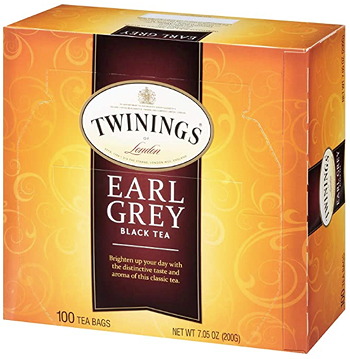
via reddit
Posted By: Alex - Mon Jun 21, 2021 -
Comments (3)
Category: Inebriation and Intoxicants, Coffee and other Legal Stimulants
Make wine now for children’s parties!
Mason's wine essence was non-alcoholic. But even so, it seems a bit odd that it was marketed as a children's drink.I can't find a description of what, specifically, it was. Although, by the name, I'm assuming it was wine that had been reduced by slow boiling to a syrup. By then adding water to the syrup, one could make a non-alcoholic wine.
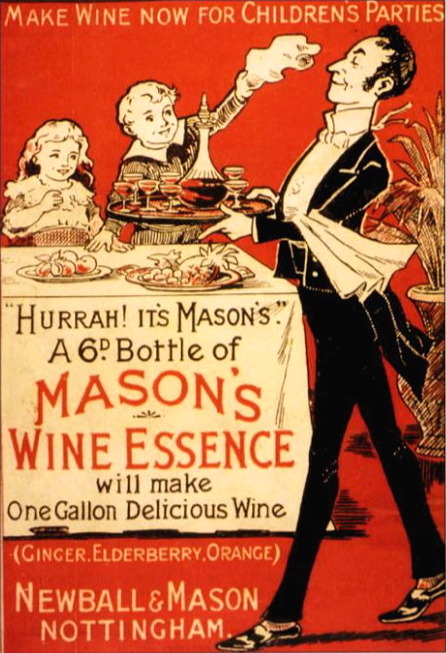
Circa 1900 - via Advertising Archives
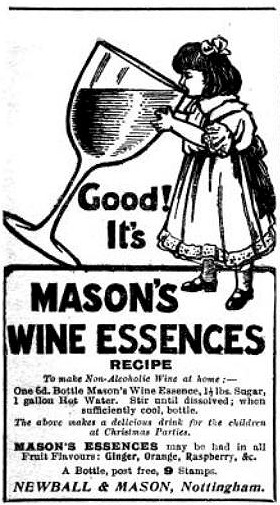
Posted By: Alex - Fri Mar 12, 2021 -
Comments (3)
Category: Inebriation and Intoxicants, Advertising, Children, 1900s
American Airlines Wine Club
Fans of mile-high drinking can now get a taste of the same experience at home thanks to the new American Airlines Wine Club. For $99 a month, members get three bottles of some of the wines served inflight shipped to them each month.I'm sure it's good wine. For $33 a bottle, it better be. But it seems to me like a weird extension of the American Airlines' brand. Although as an economy flyer I associate air travel with misery and discomfort. Perhaps if I flew first-class I'd feel differently.
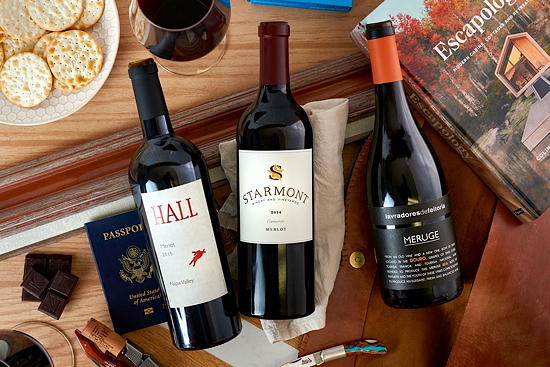
via Retail Therapy
Posted By: Alex - Thu Jan 28, 2021 -
Comments (5)
Category: Clubs, Fraternities and Other Self-selecting Organizations, Inebriation and Intoxicants, Air Travel and Airlines, Alcohol
Lobster Lovers Beer
I spotted this beer while visiting an international food market in my neighborhood and was intrigued both by the name and by the image of a woman with a giant lobster on her back.Further research reveals that it's a Lithuanian beer, and it receives pretty bad reviews on beeradvocate.com, such as the following:
Somewhat creamy despite noticeable alcohol and rather unpleasant character,
I don't see any connection to lobster. Whatever.,,,
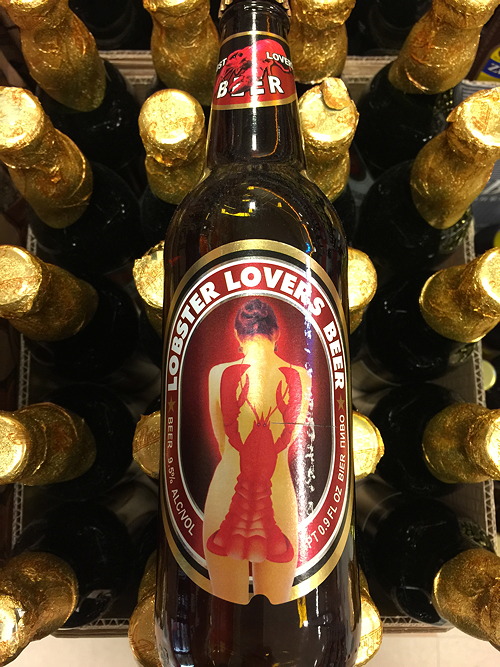
Posted By: Alex - Tue Aug 25, 2020 -
Comments (11)
Category: Inebriation and Intoxicants, Alcohol
Drunk Driving Defense
Back in 1971, Melvin Baker offered a novel defense for why he shouldn't have been charged with drunk driving. He was, he said, too drunk to have made an intelligent decision about whether to submit to the breathalyzer test — the results of which led to him being charged. He apparently argued this case all the way up to the New York Supreme Court.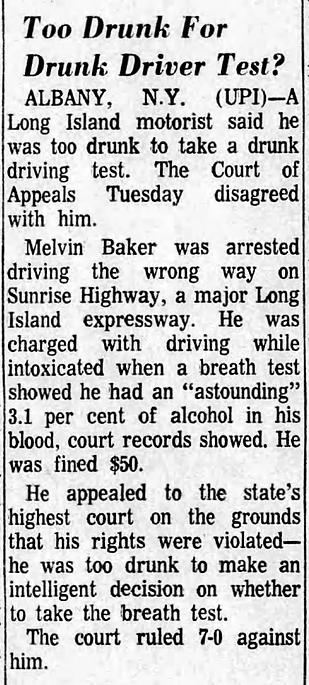
Santa Rosa Press Democrat - July 7, 1971
Details about this case are hard to come by, but this other brief article offers an explanation for why Baker persisted with his seemingly hopeless argument. Because if he had refused to take the test, he would only have had his license suspended. But having taken the test, and failed it, he also faced criminal prosecution. So it was all an elaborate, legalistic ploy to get the lighter penalty.
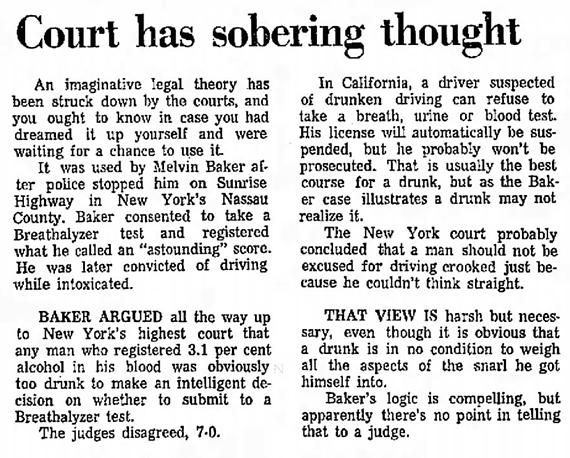
Long Beach Independent - Sep 7, 1971
Posted By: Alex - Thu May 14, 2020 -
Comments (2)
Category: Inebriation and Intoxicants, Law, 1970s, Cars
Smirnoff Leaves You Breathless
1958 ad campaign for Smirnoff Vodka. The ad copy about "breathless" drinkers who are "on the vodka wagon" makes me think of wheezing, out-of-breath drunks.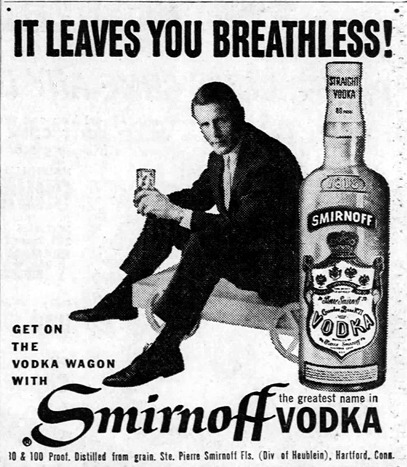
San Bernardino County Sun - Nov 6, 1958
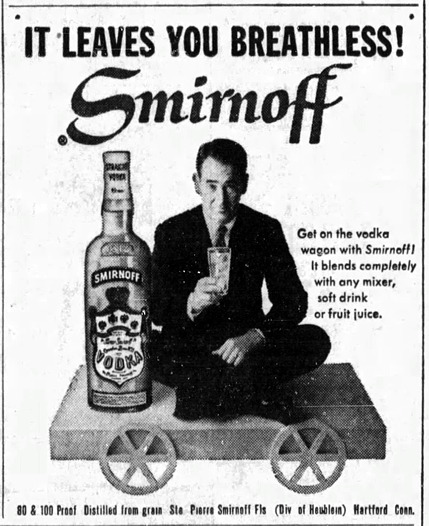
Miami News - Oct 16, 1958
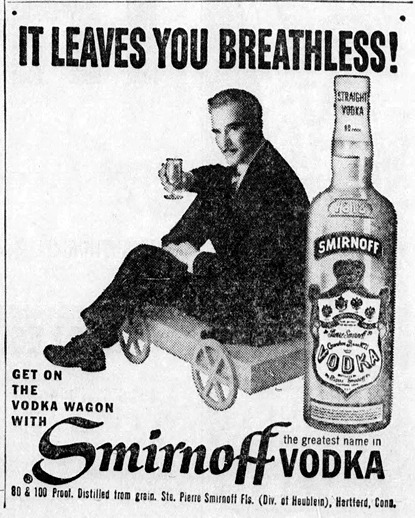
San Antonio Express - Sep 23, 1958
Posted By: Alex - Thu Oct 24, 2019 -
Comments (4)
Category: Inebriation and Intoxicants, Advertising, 1950s, Alcohol

| Who We Are |
|---|
| Alex Boese Alex is the creator and curator of the Museum of Hoaxes. He's also the author of various weird, non-fiction, science-themed books such as Elephants on Acid and Psychedelic Apes. Paul Di Filippo Paul has been paid to put weird ideas into fictional form for over thirty years, in his career as a noted science fiction writer. He has recently begun blogging on many curious topics with three fellow writers at The Inferior 4+1. Contact Us |




